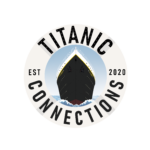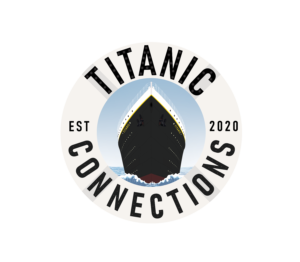Wreck Thursday – The Bridge
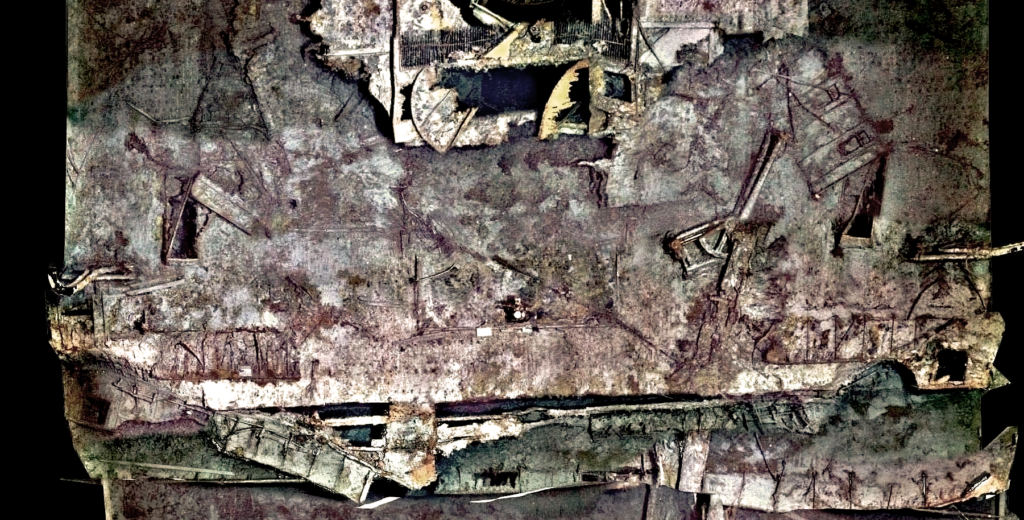
Wreck Thursday – The Bridge There are few more evocative locations on Titanic’s wreck than the remains of her Bridge. Watching the 1987 National Geographic documentary “Secrets of the Titanic,” filmed over 1985, 1986, and 1987, it is striking how Dr. Robert Ballard and those working with him believed that Titanic’s wreck would be far more intact. Ballard can be heard, while planning a dive, saying that he hoped to be able to “enter the Bridge” with his ROV Jason Jr. Of course, we now know that the Bridge is no longer an enclosed space as it was in 1912. While we can never be completely certain of exactly how the Bridge was destroyed during the bow section’s descent to the ocean floor, the pattern of the debris and the location of various parts of Bridge and its structural elements can give us some clues. t is likely that the foremast, which was swept backward and down as the ship plunged to the seabed, did some damage to the wooden roof and front of the Bridge, as well as potentially damaging the steel bulwark on which it now rests. Water rushing through the space may also have played some part in ripping away items inside. The real destructive force, however, appears to have been the downblast that resulted from the ship hitting the ocean floor with great force. This downward rush of water caused untold amounts of damage to the entire bow section, and it is likely that it completely destroyed the wooden structure of the Bridge, blasting it apart and downward. The debris of what was once the bridge tells at least some of the story of what happened to this space after it dipped below the surface. A mechanical linkage between the wheel on the Navigating Bridge and the telemotor in the Wheelhouse once ran along the ceiling of the Navigating Bridge. Today, it rests in a twisted mess on the floor of the Wheelhouse. Other structural elements are scattered on A-Deck below the Bridge. Had the rush of water swept the roof of the Bridge away, these items would be more likely found in the debris field somewhere astern of or away from the wreck itself. Instead, they lay close to where they were originally located. Today, there are two readily-recognizable features of the Bridge visible on the wreck. One is the low lip formed by the teak baseboard of the Wheelhouse, providing us an outline of that space and giving us our bearings. Directly aft of this lip is one of the most photographed and iconic spots on the wreck: the bronze telemotor that once connected the wheels on the Bridge to the massive steering gear located under the poop deck. It is the only item of equipment on the Bridge today that remains exactly where it was in 1912, marking the location from which Quartermaster Robert Hichens tried desperately to turn the Titanic away from the iceberg. As such, it has become the most popular spot for visitors to the wreck to place a plaque in memory of those lost and marking their visit. These rest in a row along the teak baseboard that once formed the front of the Wheelhouse. A closer inspection of the area of the Bridge and the space around it reveals much more. Check out the images to tour some of these smaller finds. One of the engine order telegraphs from the Navigating Bridge now rests on the port side of A deck, the drum separated slightly from the base. This proximity, much like that of the mechanical linkage noted earlier, indicates that the bridge was mostly destroyed by the downblast and not entirely by the falling mast or the rushing water. This is from 1996. The telegraph was recovered shortly after. A black cable, either for electricity or for the Wheelhouse telephones, runs along the forward teak baseboard of the Wheelhouse. This is from 2003. The bronze telemotor stands in the foreground, and some of the numerous plaques can be seen there as well. Directly to the left of the telemotor and in the center of the image is the mechanical linkage mentioned earlier. This is from 2003. In the background on the right, a wall of the Chartroom and Pilot’s Cabin, located behind the Wheelhouse, is visible. The collapsed bulwark of the port bridge wing can be seen in the background of this image, with the officer’s stairwell to the right and the cranked out davit for the port side emergency boat and Collapsible D to the left. This is from 1996. The collapsed rear wall of the starboard bridge wing now rests next to the cranked-in davit for the starboard emergency boat and Collapsible C. The davit was cranked in to connect Collapsible A and launch it after it was freed from the top of the Officer’s Quarters, but Titanic took her final plunge before this could be done and the boat was washed off the deck. This is from 1996. From 2003, this image shows the telemotor once again, but just behind it and resting diagonally across the Wheelhouse floor is a rigging line from the fallen foremast. Today, this is tangled with the linkage which connected the wheelhouse and navigation bridge helms. Also of interest is the base of the telemotor, including the various cables running from it into the deck. Also from 2003, this image shows the collapsed bulwark and forward wall of the wing cab on the starboard side. The remains of the raised platform that once ran along the base of the bulwark to allow an officer to step up and look over it can be seen here, as can the remains of the bulwark that connected with the aft wall of the wing cab (upper right of the image). The window for the forward wall of the wing cab is at the far left. In these views of the remains of the Bridge found on A deck, there are many
Wreck Thursday – The Funnels
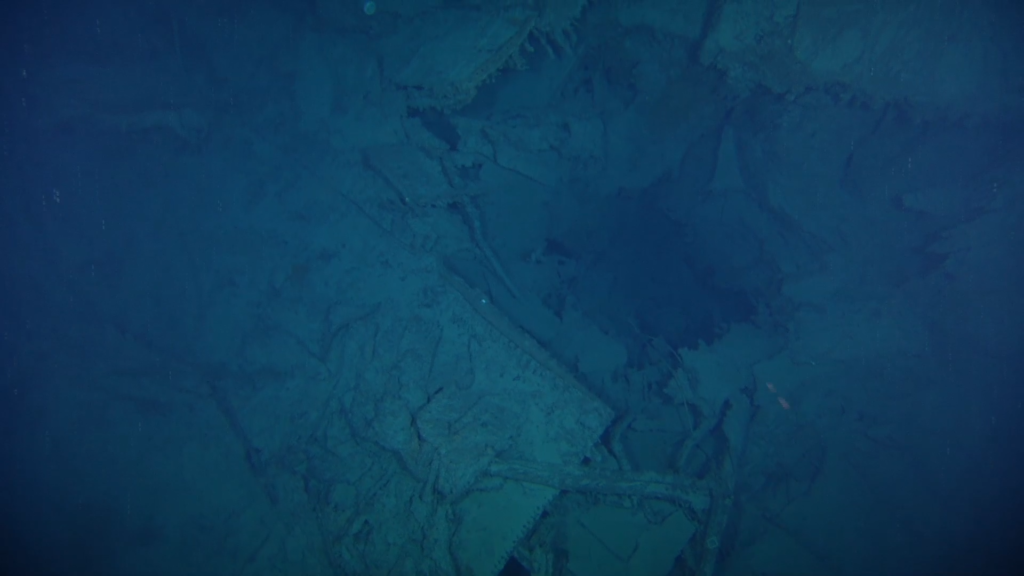
Wreck Thursday – The Funnels On Tuesday, we took a look at Titanic’s four majestic funnels, their design, and the way all four of them provided ventilation to various spaces throughout the ship, from the boiler rooms to the galleys and beyond. During the sinking, Titanic’s funnels collapsed, either sinking on their own or being pulled down by the wreck itself. The collapse of the first funnel, depicted in countless films, was a key moment in the ship’s final plunge. But what happened next? Titanic’s funnels, along with her masts and rigging, were among the items that originally concerned the team lead by Robert Ballard and Jean-Louis Michel when they decided to use the towed sled Argo to film the wreck once it was discovered in 1985. If Argo had been too close to the decks, it might collide with the ship’s funnels or get stuck in the rigging. Fortunately for the explorers, the funnels were nowhere to be found and the ship’s masts had both collapsed. The funnels, made of relatively thin metal, had not survived intact. Instead, the pressure of the ocean had flattened them down, and much of their metal had corroded into barely-recognizable forms. Due to the extensive mapping of the wreck and the debris field, however, what remains of the funnels, not to mention to tubing, whistles, and ladders that once adorned them, has been found, photographed, and, in some cases, recovered. Let’s now take a tour of the images to see what remains of these once-beautiful and iconic funnels. First, in a 2001 image, we see the remains of one of the steam pipes that had allowed for an emergency release of steam pressure. This would’ve been on the forward or aft part of one of the funnels. Perhaps more interesting, however, are the remains of one set of Titanic’s working whistles. A set of the ship’s whistles were recovered in 1993 by RMS Titanic Incorporated (RMSTI). We will discuss these in a future post. In the next image, from 2003, we can see the gaping hole where the first funnel once stood. The violence with which this funnel collapsed during the sinking is evident from the torn remains of the stack in the center of the image, as well as the twisted piping near the bottom of the image. Hauntingly in the third image, also from 2003, we can see one of the escape ladders inside the uptake for the first funnel. Available as a pathway for personnel from the ship’s boiler rooms to escape to the upper decks in an emergency, we’re left to wonder if this ladder provided salvation for any of the few who escaped the ship’s lowest decks. In the fourth image, again from 2003, we can see a close-up of the twisted and broken steam pipe from the second image. This is even more evidence of the way in which the first funnel fell into the sea. In the fifth and sixth images, we’re still looking at the area around the first funnel, this time at the space just in front of it. The grate in the foreground covers the Fidley trunk. This open space forward of the stack would’ve provided ventilation to the boiler room below, as well as having space for the escape ladders we mentioned earlier. In the seventh image, we’ve moved aft to the crumbled remains of the base of the second funnel. Here, we get some idea of the subdivision within the funnel itself that was mentioned on Tuesday. Other, smaller pieces of the funnels have been found in the debris field around the wreck, including flattened remains of the funnels themselves and much of the piping that was once visible on the aft side of the third funnel. As new images come to light and are analyzed, we will hopefully be able to continue to piece together the final journey and status of what were once the ship’s most recognizable external feature. Content: Nick DewittImages: 2001 Telegraph2003 NOAA2010 NOAA https://www.youtube.com/watch?v=l0v1d1kZxqE The footage above was released from the 2022 dive (Oceangate) by CBS in November of 2022.
A New Titanic Connections Feature: Titanic Tours
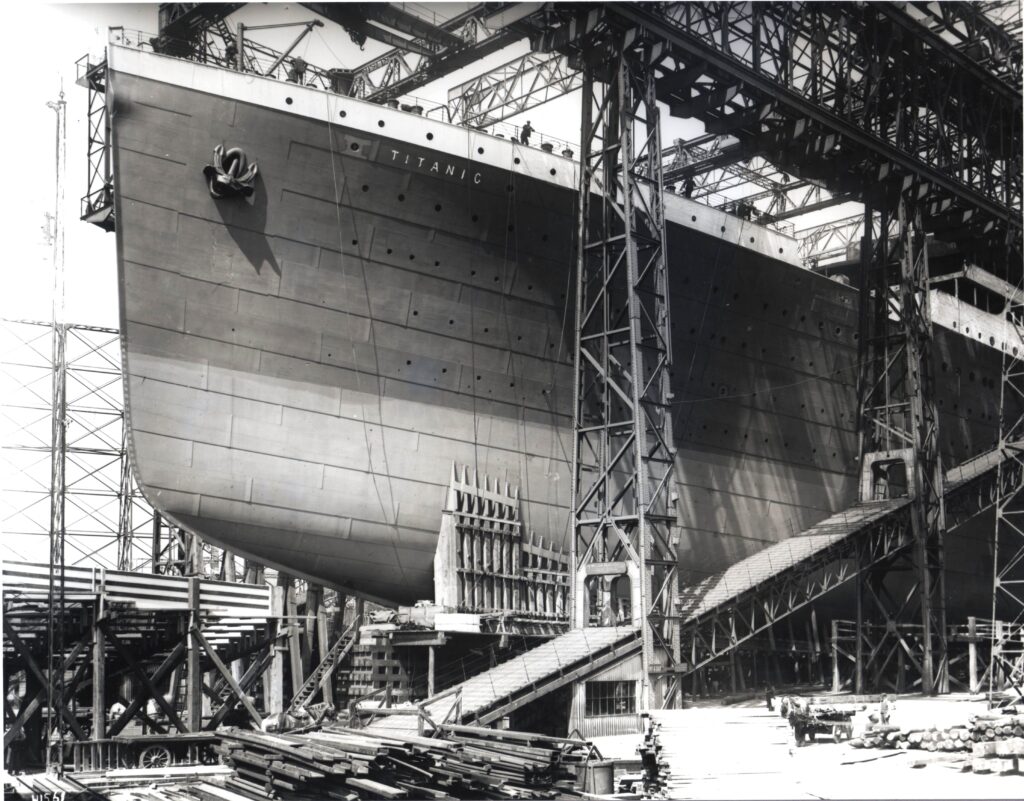
TITANIC CONNECTIONS FEATURE: TITANIC TOURS When Titanic was constructed at Harland and Wolff from 1909 through 1912, she would become the largest moving object ever made by man, edging out her elder sister Olympic thanks to additional features that were included in her after experience with Olympic showed various possibilities for improvement. Titanic Connections, using original photographs of the Titanic and her sister Olympic, as well as building plans, digital recreations, and other sources, will be taking our visitors on a tour of the ship. Every Tuesday, Titanic Connections’ historian Nick DeWitt will touch on a particular feature of the Titanic, starting with her keel plates and finishing eventually with the tops of the masts, funnels, and the wireless aerial. As Bruce Ismay said in James Cameron’s 1997 epic “Titanic,” the tour will be “from the keel plates up!’ We hope you’ll enjoy this feature and we look forward to bringing it to you each week. If you have a feature of the ship you want to make sure we touch on, please let us know! While the weekly tours will be done from the bottom of the ship to the top, we are always open to suggestions about what you’d like to hear more about when we get to that part of the ship! PHOTO CREDIT: Robert Welch, Harland & Wolff (now in the public domain)
